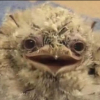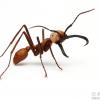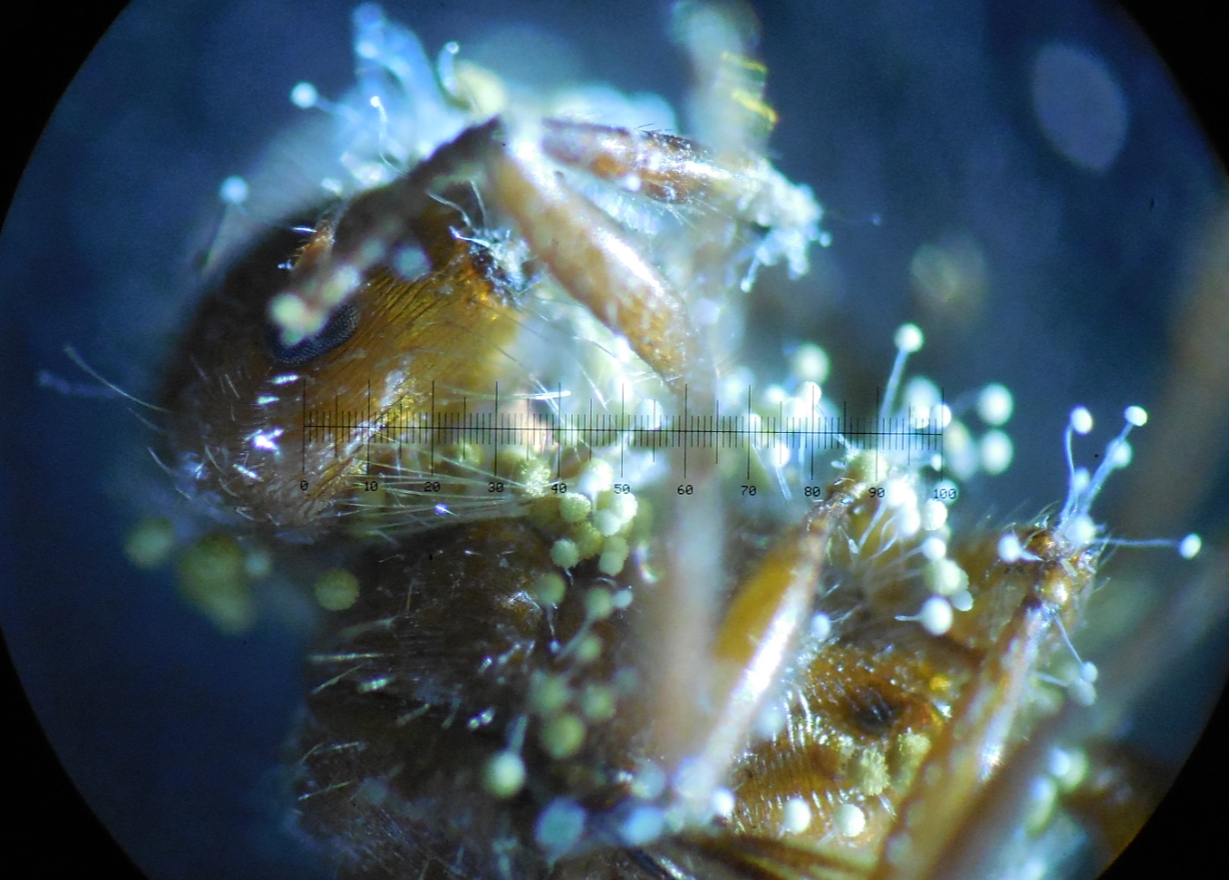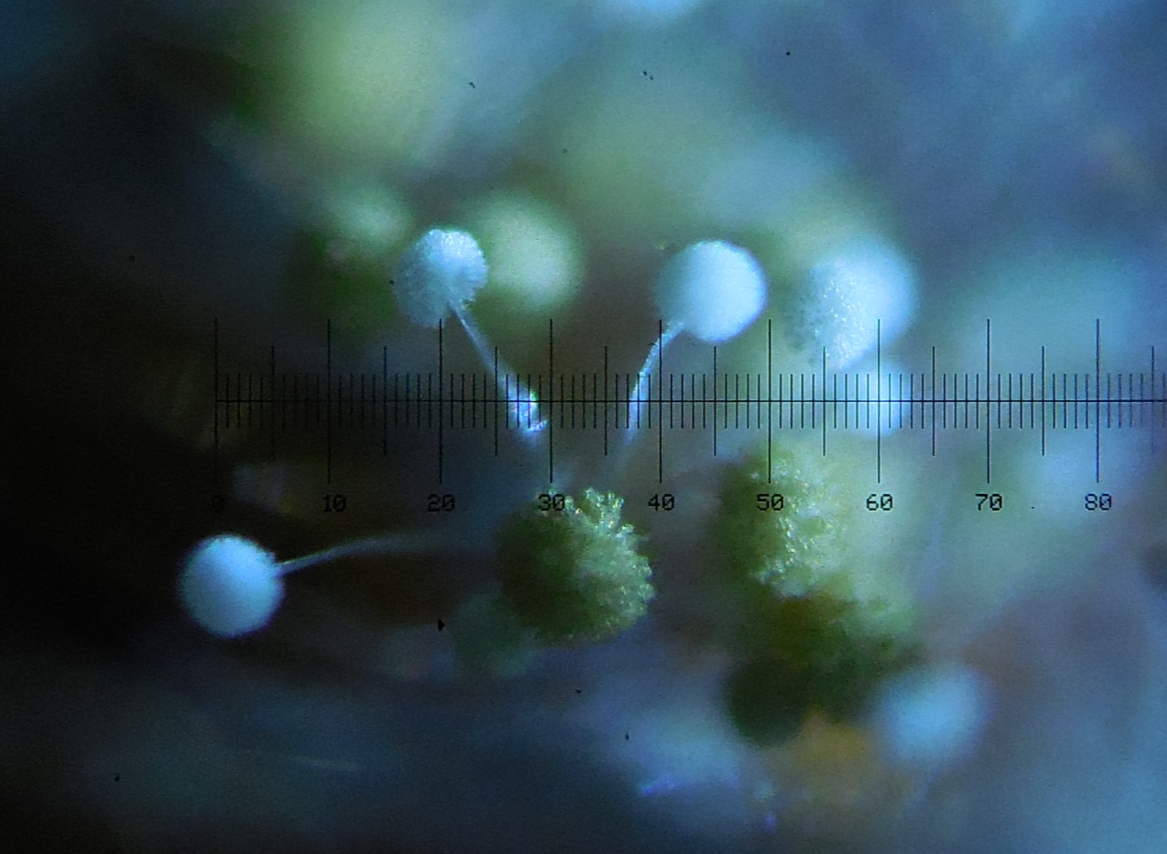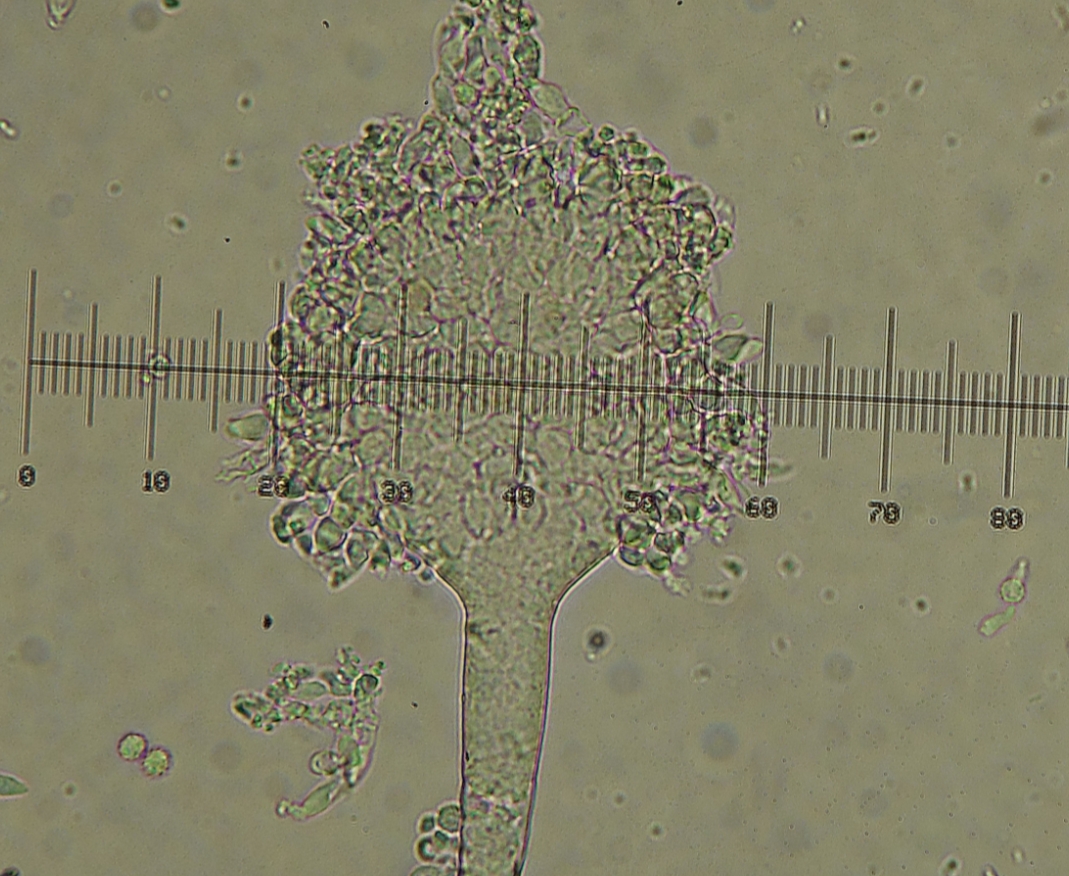You can control mold growth in many ways.
Temperature is one, as most molds grow in a rather warm range, 15 to 30 C. Cooling or heating outside that range would limit growth, but not prevent it (short of fatal temperatures to at least tropical ants).
Reducing availible moisture is another way to inhibit mold growth. Most molds are typically found where there is water in the air, or pooled up consistently. Bonding the availible water to things like salts, sugars, or starches will also reduce the availible water.
pH is another way to reduce the opportunity for mold growth. Most molds also prefer extremely acidic (pH a bit more than 4) to neutral, and even slightly alkaline.
Unfortunately, it would seem only reducing the moisture level would properly apply in food collection areas in ant keeping.
Also, Batspiderfish is absolutely right. There are so many types of molds out there that you couldn't possibly identify ANY single type without a complete lab analysis. Color, diet, and structure to the naked eye means about as much as coloring does in ant species.
Edited by benjiwuf, December 21 2016 - 11:19 AM.





